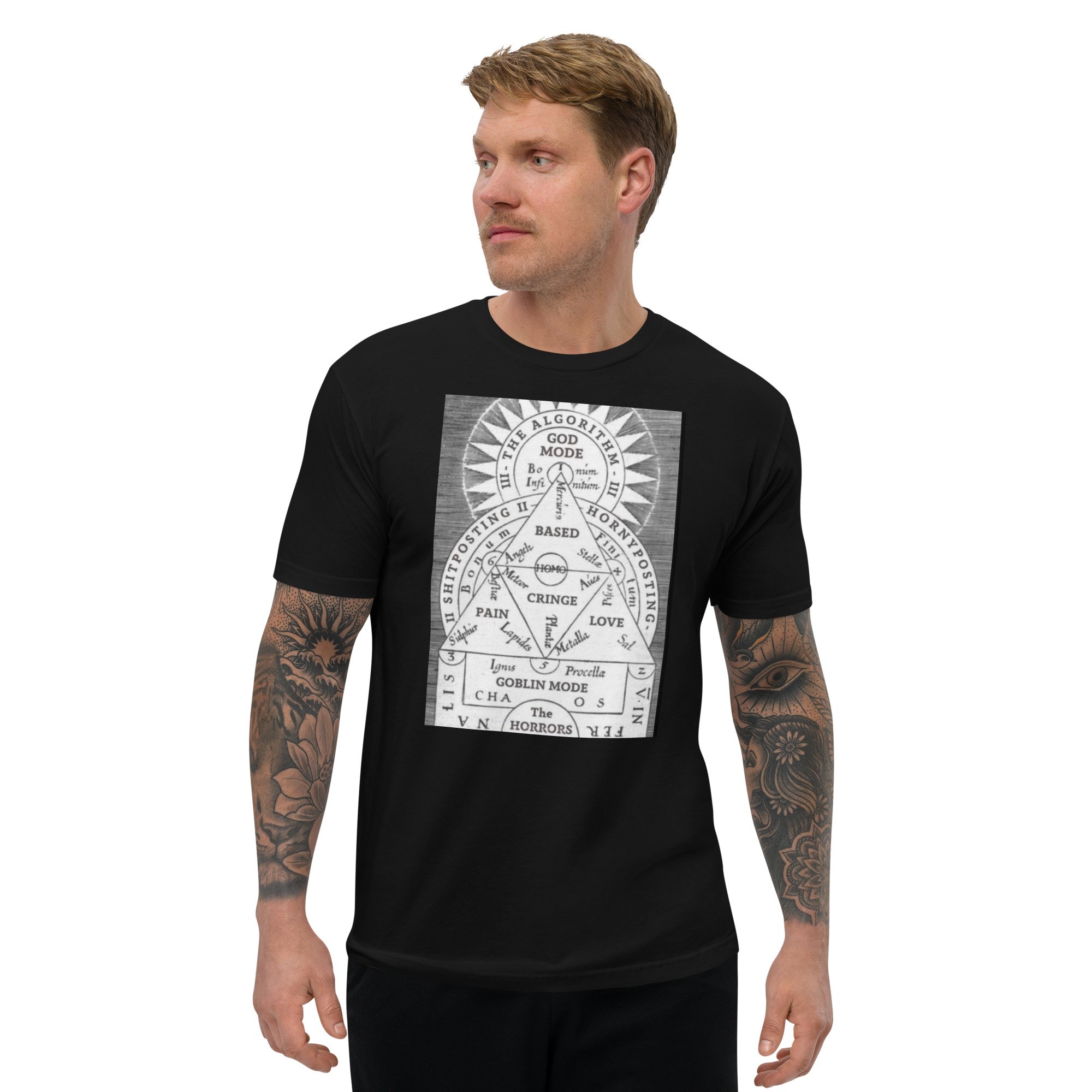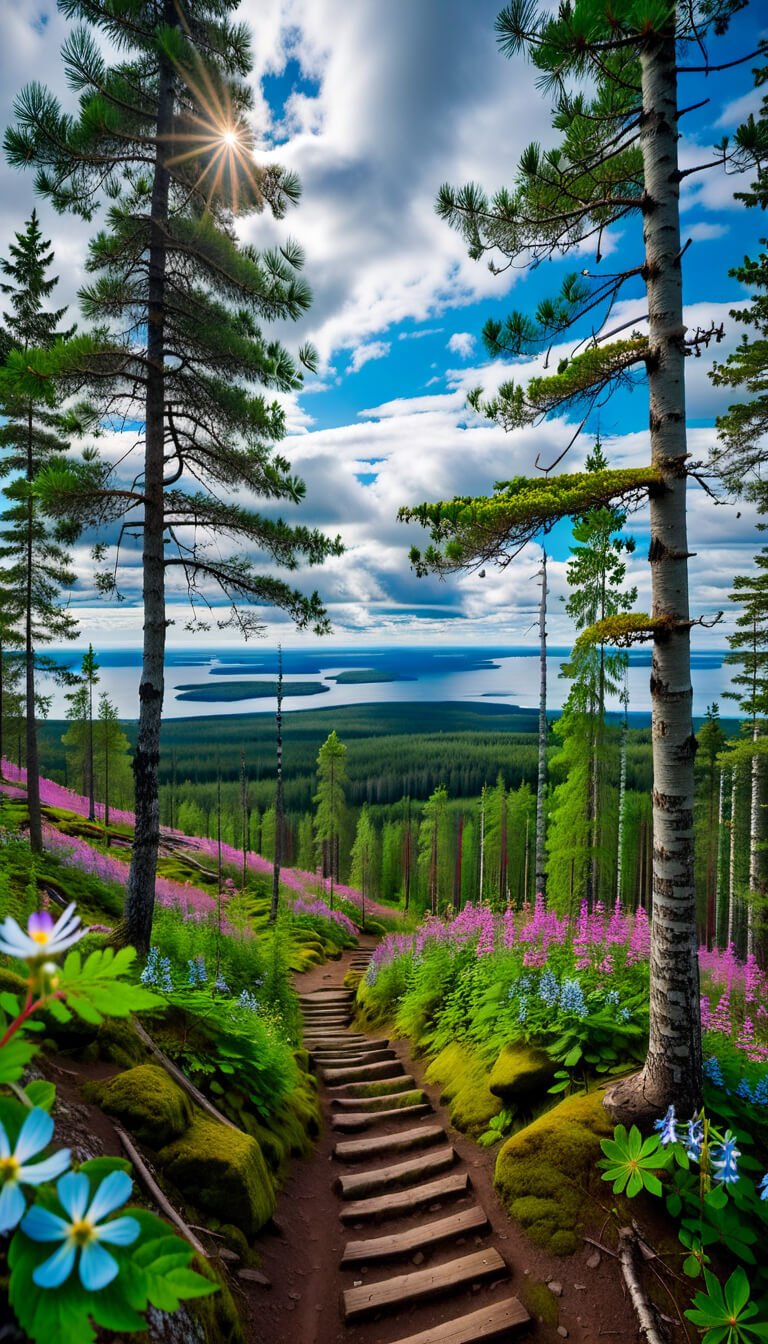Finland's "Devil's Church" Pirunkirkko Cave: Rare Acoustics and Shamanic Portal
Spiritual Seeker Prays in Deep Reverence Inside Finland's "Devil's Church" Pirunkirkko
The remote Pirunkirkko (Devil’s Church) cave in eastern Finland has attracted spiritual seekers and healers for centuries, defying singular classification. This paper analyzes the cave’s enduring draw through an integrated multidisciplinary lens incorporating geology, acoustics, archaeology, anthropology, history, and religious studies perspectives.
The rare resonance phenomenon uncovered by recent empirical research is elucidated, alongside examination of the surrounding sacred landscape, indigenous Sami animistic traditions, recorded oral histories and the site’s persisting supernatural associations into modern times. While the cave’s unusual morphology and acoustic traits now scientifically explain certain long-held beliefs about its purported magical properties, quantitative testing methods also expose their limitations in capturing the richer meanings ascribed to it by diverse peoples over multiple generations.
Ancient Finnish Manuscript Depicts the Ancient Lore of the Dire Wolf Hirviösusi
Introduction
Nested deep in Finland’s remote forested Koli hills resides the narrow, 34-meter-deep Pirunkirkko crevice, known as Devil’s Church cave. Despite its isolated location, this unassuming fissure has attracted the curiosity of spiritual seekers, ritual specialists and everyday visitors for centuries (Rainio & Hytönen-Ng, 2023).
The Koli Hills span a forested area in Eastern Finland near the border with Russia. Characterized by rugged granite bedrock scoured by glaciers, the hills rise over 350 meters above the surround plains, affording stunning views of nearby lakes like Pielinen from outlook points. The remote hills have a subarctic climate with long snowy winters and brief warm summers.
Majestic Sun-Kissed Views of an Ancient Trail Through the Koli Hills in Finland
Indigenous Flora and Fauna
Coniferous boreal forests dominate the landscape, composed primarily of Scots pine, Norway spruce and birch trees. Berry bushes like lingonberry, blueberry and cloudberry grow abundantly in clearings. Wildlife includes moose, brown bears, wolverines, lynx and a diversity of bird species like Capercaillie and willow grouse. Flying squirrels inhabit the forest canopy.
Deciduous woodland areas transitioning into more northern taiga zones support fungi including psychedelic Amanita muscaria fly agaric mushrooms. These were integral entheogens for Sami shamans seeking trance states to commune with spirits of the terrain. Streams hold Arctic char and Baltic herring migrate along the coast each spring, both important nutritional resources for Sami inhabitants.
Mielikki is known as the Finnish Goddess of Forests and Hunting. She is often described as the wife of the Great Bear Spirit Tapio.
Life for Sami Shamans
Before Christianization, Sami shamans known as noaidi would have frequented the Koli Hills and Pirunkirkko cave for sacred rites. Their spiritual work relied on intimate geospatial knowledge of landscape features imbued with numinous meaning. Noaidi navigated the three-tier cosmology through ecstatic trance using auditory techniques like chanting and drums alongside psychoactive plants.
Sami communities living a semi-nomadic reindeer herding lifestyle likely sheltered temporarily in the hills, finding materials for crafts and tending herds on lichen-rich forests. Shamans perhaps gathered entheogens near Pirunkirkko and conducted rituals within appealing to intrinsic spirits for blessings upon the people and herds.
The cave’s striking acoustics no doubt captivated noaidi and fueled its attribution as a liminal zone between worlds.Archaeologists suggest it likely served as a sacred site for indigenous Sami groups long before its first appearance in written records in the 17th century (Siikala, 2002).
Persisting legends and modern spiritual practices connected to it indicate a layering of meanings tied to the natural cave that scientific inquiry alone cannot wholly decode. Recent interdisciplinary research has uncovered a rare acoustic phenomenon within Pirunkirkko that helps empirically explain some of its lore, yet quantitative methods also expose their limitations in encapsulating the full spectrum of lived experience and ontological significance ascribed to it across cultures and eras.
This paper will analyze the cave’s enduring allure by synthesizing insights from across disciplinary boundaries - illuminating both the tangible and intangible dimensions that imbue this unusual landscape feature with such a sense of multivalent mystery.
Ancient Indigenous Sami Reindeer Herder of the Koli Hills Region of Finland
Sami Animism, Sacred Sites and Sound
The indigenous Sami reindeer herders of northern Scandinavia and western Russia practiced an animistic nature religion directly reliant on surrounding lands, waters and celestial bodies prior to Christianization campaigns beginning in the 17th century (Pentikäinen, 1998).
Specific landscape features and locations obtained heightened spiritual meaning and import based on unusual visible characteristics, interconnections forming alignments between landmarks, documented mythic events or associations with particular spirit beings (Kraft, 2004). Sites like peculiar rock formations, anomalously bubbling springs, craggy peaks, oddly twisting trees and echoing caves were deemed thresholds or portals between this world, the upper and lower spirit dimensions in the Sami cosmological conception (Mulk, 1994).
Skilled Sami shamans known as noaidi served vital functions as ritual mediators, soothsayers and healers within their communities, adept at journeying these liminal zones between worlds in shamanic trance states to plead for guidance, bountiful hunting luck, favorable weather, protection from illness-causing spirits or resolution of communal misfortunes (Rydving, 1993).
Songs, chants and the rhythmic beating of ceremonial drums would accompany the noaidi as they navigated passageways between cosmic tiers, the sound frequencies helping align their consciousness to the relevant plane of reality needed to communicate with the appropriate spirit entities for their divination or healing work (Franciscus, 2019).
Ancient Manuscript Describes the Mystical Traditions of Pirunkirkko (Devil’s Church) Cave in Eastern Finland
Through dancing, drumming and chanting the noaidi would enter altered states of awareness, often symbolically climbing the World Tree connecting the three worlds to obtain esoteric knowledge to benefit their communities, sometimes even shapeshifting into animal form during their ecstatic journeys to more easily traverse the terrain (Siikala & Ulyashev, 2016).
Gradually supplanted by settled Christian farmers, residual Sami presence can still be seen in the region’s toponyms and folk practices, reflecting how this landscape intrinsically shaped their indigenous lifeways for millennia before dominant ideologies marginalized these relationships.
While Christianization efforts beginning in the 17th century actively suppressed these shamanic traditions in a bid to convert indigenous populations, elements of the ancient animistic worldviews and place-based spiritual customs continue among the contemporary Sami through syncretic adaptation and what Stark (2006) refers to as the “hybridization” process between pagan and Christian religious systems among native European groups.
Aspects of old Sami spirit-worship and nature reverence filtered into folk ritual practices still evident in rural Finland today (Stark, 2006). This understanding of the land, water and sky as imbued with indwelling consciousness and agency forms a conceptual backdrop for why locales like the Pirunkirkko have been valued through successive eras despite shifting religious paradigms impacting their terminology and attributed meaning in the region.
Finnish Shamanic Priestess Performs Ancient Rites to Nature Inside the Pirunkirkko Cave
Cave Morphology and Documented History
Tucked into Finland’s remote forested hills, the Pirunkirkko cave has likely been known to local indigenous inhabitants for many thousands of years as a site of spiritual significance before eventually appearing in formal written records.
With its first noted mention emerging in historical documents in the 1600s, the cave became subjected to the religious reinterpretations accompanying the spread of Christianity in the region, as sites tied to indigenous animistic-shamanic nature spiritual practices often became rebranded or demonized in alignment with missionary efforts to suppress non-Christian traditions (Siikala, 2002).
The introduction of the current Finnish name Pirunkirkko directly translates to “Devil’s Church,” with piru being an old Finnish word referring to a devil or demon. In the Christian paradigm the cave became portrayed as a locale imbued with darker forces, associations with evil and even a literal conduit for contacting damned souls.
According to archived parish documents, locals traversing rugged wilderness terrain through specific sacred pathways would access the remote cave in order to quite literally “speak with the Devil” about their problems, fortunes, crops, relationship issues and other personal matters (Koski, 2011).
Christian mystics would also use the cave as a site to ritually renounce worldly sins or commune with forces from beyond. While the terminology became influenced by Christian reinterpretations, the sacred meaning and spiritually-charged atmosphere attributed to the grotto nonetheless persisted from older animistic-shamanic traditions tied to the landscape.
One key legendary figure that frequently stands out in the cave’s rich documented lore is Kinolainen, a reputed shaman and healer dating back to medieval times who was said to expertly harness the grotto’s magical properties for spiritual and healing rituals (Koski, 67).
Kinolainen, A Medieval Shaman Known For Exploring the Unique Resonance of Pirunkirkko
Lore of the Ancient Finnish Shaman Kinolainen
Though details about Kinolainen remain scant in the sparse written records, various second-hand accounts passed down through generations depict him as a larger-than-life mystic adept in the magical arts whose lively ceremonies allegedly involved loudly singing songs to echo through the cave walls, stomping about, shouting demands into the void to summon beneficent spirits and vigorously banging drums or firing guns to grab the attention of lingering non-corporeal entities. In return for these raucous displays, his summoned supernatural contacts would then bestow their wisdom in the form of divinatory insights or herbal/medicinal knowledge to mend his patients’ physical and spiritual ailments (Niemi, 2009).
While aspects like the blasting guns likely emerged as embellishments through repeated tales, the core elements around Kinolainen in these stories showcase shamanistic principles – his mastery of the cave as a conduit to accessed altered states and hidden spiritual knowledge.
Though post-conversion records recast the grotto as an evil locale, the enduring accounts of his exploits therein illustrate the underlying layer of an animistic tradition that never fully disappeared despite surface-level attempts to suppress it (Stark, 2006). The theme of mediator-figures tapping into the space as a channel to otherworldly insight remains woven through the cavern’s lore both in past chroniclers and among contemporary spiritual seekers.
Modern Spiritual Seekers Remain Inspired By The Legendary Exploits of Kinolainen
Acoustic Analyses – The Phenomenon of Resonance
Seeking to decode the strange allure and purported magical properties associated with Pirunkirkko cave, an interdisciplinary team of researchers recently conducted extensive acoustic measurements and analyses of the natural subterranean space alongside anthropological evaluations of modern spiritual practices connected to it (Rainio & Hytönen-Ng, 2023). Their findings uncovered a subtle yet distinct and rare resonance phenomenon occurring near the rear terminus of the narrow cavern that empirically validates and helps explain centuries of superstitious beliefs related to sounds exhibiting unusual amplification effects at this location.
The particular cave morphology featuring long, smooth and relatively parallel walls reflects certain sound frequencies back upon themselves, creating what acoustic engineers call a “standing wave” effect at the cave’s natural resonance frequency of 231 Hz matching its interior breadth and angles (Everest & Pohlmann, 2015).
In layman’s terms this means sounds emitted within Pirunkirkko cave at precisely 231 Hz dramatically echo for up to a full second - a markedly anomalous acoustic property rarely encountered in natural settings. Slight deviations from this precise wavelength fail to produce the same prolongation effect, adding to its mystique. Researchers suggest this trait was likely always unconsciously perceived by people through the generations as strangely reactive and spiritually-charged in some intangible way (Rainio & Hytönen, 2023).
Modern audio analyses support that something genuinely unusual occurs in the energetic patterns and rhythms within the living cave system, especially near its terminus. While resonance itself is commonplace in manmade architectural structures intentionally designed to manipulate sound, organically-formed natural caves rarely exhibit such perfectly balanced ratios between width and length to support standing waves.
Contemporary mystics and spiritual groups who continue age-old shamanic-esoteric traditions associated with the site incorporate special chants, rhythmic songs, clapping and drum beating patterns attuned to this 231 Hz frequency into their rituals, intuitively or unwittingly heightening the amplification effects that then in turn serve to stimulate modified states of consciousness compatible with the supernatural contacts, healing and divination work associated with their practices (Franciscus, 2019; Rainio & Hytönen-Ng, 2023).
Shamanic Priestess Poses With Native Wildflowers of the Koli Hills
Sami Shamanism and the Role of Entheogens
The religious and healing practices of the Sami people, the indigenous circumpolar group inhabiting northern Scandinavia and northwest Russia, were centered around nature-based animism and shamanism (Pentikäinen, 1998). At the heart of Sami shamanism were the noaidi, shamans who mediated between the human and spirit worlds through ecstatic trance states.
A key element facilitating these trances were natural psychoactive plants and fungi indigenous to the Subarctic Boreal region. This section will provide an in-depth examination of the entheogens used in Sami shamanism and their role in cultural, spiritual, and pragmatic functions.
Sam Reindeer Herder Poses in Finland
Fly Agaric (Amanita muscaria)
Chief among the entheogens utilized by the Sami noaidi was the iconic red and white fly agaric mushroom (Amanita muscaria; Laatsch, 2004). Fly agaric ingestion induced hallucinatory and dissociative effects conducive to trance states through its compounds ibotenic acid and muscimol (Wasson, 1968).
This allowed noaidi to communicate with spirits and traverse cosmological realms in "ecstatic trance" and “spirit flight” (Wasson, 1968). Fly agaric held a sacred status linked to the intrinsic nature spirits of the Arctic landscape (Nordagård, 2015). Noaidi would consume fresh or dried mushrooms as part of appeals to these spirits for guidance and blessings upon communities (Laatsch, 2004).
Beyond its spiritual functions, fly agaric also served pragmatic medical purposes. Its analgesic properties benefited ailing Sami herders and their reindeer when consumed or administered as urine extract (Pendell, 1995). This intertwined Sami animism, shamanism, and livelihood as nomadic reindeer herders.
Fly agaric use indicated an intimate understanding by noaidi of reindeer perspectives to enhance human-reindeer reciprocity, facilitating soul retrieval ceremonies when animals' souls wandered in illness (McKenna, 2004). Thus, the sacred mushroom occupied a crucial spiritual, cultural, and practical role central to Sami identity.
Other Entheogens
Additional entheogenic flora contributed to noaidi practices. The visionary sage Salvia divinorum was smoked or consumed as an infusion to induce vivid mystical experiences integral to divination (Stafford, 1992). Psilocybe semilanceata, a magic mushroom abundant across the boreal north, likely held significance as well given its historical and continuing use by other indigenous groups like the Koyukon Athabaskans of interior Alaska (Nichols, 2004).
Sami noaidi may have crafted synergetic admixtures of MAO-inhibiting and DMT-containing plants to optimize psychoactivity, as seen cross-culturally with entheogenic brews like ayahuasca (Nordagård, 2015). Regional ethnobotanical research is needed to further elucidate Sami entheogenic pharmacopeias (Schultes & Hofmann, 1992).
Ancient Finnish Alchemical Text Describes the Resonance of the Devil's Church
Suppression and Survival of Traditions
Christian missionizing beginning in the 17th century actively suppressed Sami folk practices including shamanism and the open use of entheogens (Mulk, 1994).Noaidi functions were delegitimized as “heathen” while entheogens came under the legal prohibition that accompanied colonial religious authorities.
However, elements of the ancient worldview persisted in syncretic forms such as folk-magic incorporating Christian and pre-Christian elements, reflecting the hybridization process between indigenous and imposed religious systems observed cross-culturally(Stark, 2006).
Certain elements of nature worship and animism also blended into folk rituals still practiced in rural Finland and Scandinavia today (Edsman, 1967; Itkonen, 1958). Mystical practices involving entheogen use likely continued clandestinely or incorporated discreet symbolism, ensuring survival of core Samicultural traditions amidst suppression attempts.
Lush Natural Paradise in the Koli Hills of Finland
Contemporary Perspectives
Current movements among dispersed Sami seek to revitalize traditions and assert self-determination.The rediscovery of suppressed shamanic practices including entheogen use occupies an important role in cultural reclamation. Ethnobotanical exploration and open discussion aim to reintegrate plants and techniques that sustained Sami shamanism for millennia into ceremonial and healing contexts(Siikala& Ulyashev, 2016). At the same time, careful consideration of ecological and legal sensitivities is needed(Hallowell, 1960; Holmstedt & Bruhn, 2005). Overall, contemplating the once sacred role of local flora reveals the profound spiritual, medical and ecological meaning these relationships held for Sami identity, offering lessons on reciprocity between culture, landscape and consciousness.
Sami Woman Poses Inside the Devil's Church Cave
Discussion
This interdisciplinary analysis of the Pirunkirkko cave highlights how perspectives from geology, acoustics, archaeology, anthropology, history and religious studies each contribute partial pieces to decode the site’s enduring significance, yet no single discipline fully encapsulates its richness. While recent acoustic measurements empirically validate unusual reactive sound properties, quantitative testing procedures cannot encapsulate the full spectrum of meanings it has held.
The rare standing wave resonance phenomenon occurring in the cave, matched by the chants and rhythms incorporated into rituals by both documented legendary healers like Kinolainen and contemporary spiritual groups, empirically demonstrates that indigenous animistic sensitivities perceived something genuinely unusual about this space even before modern acoustic science could measure it. Yet experiential, symbolic and ontological significance outpaces even updated technical comprehension.
Beyond appreciating the tangible quantifiable traits, qualitative methods from anthropology and religious studies reveal the limitations of relying solely on reductionist testing paradigms for encapsulating the fuller lived significances sacred sites hold for peoples across eras. While positivist empirical examination now validates observable acoustic effects, complementary constructivist approaches recognizing that many dimensions central to human value systems remain intangible and elude quantification are equally vital (Tilley, 2008).
Modern technical decoding of traceable sonic anomalies cannot wholly substitute for the multitude of socio-cultural and symbolic meanings the space has carried. As Tilley (2008) states, “Lived, embodied experience is always more complex than abstractions about it.” While recent interdisciplinary findings expand understanding of the cavern’s physical properties and documented associated beliefs, grasping the profound experiential resonance it has held endures as an interpretive process requiring sensitive contextualization.
Mielikki, Finnish Goddess of Forests and Hunting Poses With Her Beloved Bears
Conclusion
In evaluating a numinous locale like Finland’s Pirunkirkko cave, interdisciplinary research combining geology, acoustics, archaeology alongside anthropology and religious studies perspectives achieves deeper insight than any single investigatory method alone can render. Empirical findings validate that an anomalous resonance property exists which likely contributed to centuries of myths around its heightened reactivity. However constructivist approaches equally highlight the limitations of relying strictly on quantitative scientific paradigms for encapsulating the richer meanings sacred sites hold across eras.
While recent acoustic measurements now explain the physics behind the cave’s rare sound prolongation effects, testing procedures alone leave experiential dimensions unaddressed. Tracing the grotto’s significance requires recognizing what Tilley (2008) describes as “the ontology of landscapes themselves as lived-in settings that structure and give meaning to human existence.” Beyond analyzing traceable sonic anomalies, contextualizing intangible factors like symbolic connotations and ontological orientations remains vital.
This collaborative venture combining positivist and constructivist angles not only elucidates traceable acoustic effects but, importantly, also acknowledges the limitations inherent in singular methodologies for conveying the broader enduring significance locales accrue across generations as sociocultural touchstones. While examining sacred sites like Pirunkirkko through an exclusively scientific materialist lens expands comprehension of measurable traits, complementing this view with humanistic interpretive approaches acknowledging subtler social, cognitive and metaphysical valences better conveys a fuller appreciation of their potency.
As Borofsky (2000) articulates regarding opportunely matching methodologies to knowledge domains, “The litmus test of any approach remains how well it illuminates the topic under investigation.” Understanding locales like the cave benefits from sensitively interfacing methods suited to tangible as well as intangible facets comprising the totality of dimensions intermixing to render certain spaces’ unusually heightened resonance over time. This demands not just masterfully wielding given techniques but thoughtfully synthesizing across disciplinary insights in service of elucidating the subject’s inherent complexity.
In the spirit embodied by pioneering researcher Pertti J. Pelto (2013) who advocated embracing pluralism in applying the most fitting investigative tools to genuinely understand a studied phenomenon rather than rigidly adhering to single paradigms when addressing multidimensional topics, decentralized interdisciplinary approachesbalancing empiricist precision with humanist contextualization helps convey fuller appreciation of the enduring draw sacred sites like Pirunkirkko cave have commanded across eras and cultures.
Sami Reindeer Herder Poses Near Finland’s Pirunkirkko cave
Unlock a World of Opportunity with Ultra Unlimited
Are you drawn to the mysteries held within sacred sites like Finland's alluring Pirunkirkko cave? Does learning about shamanic cultures spark inspiration within your spirit?
At Ultra Unlimited, we create products celebrating magic and ancient wisdom traditions found across the globe - artifacts infused with the resonances of those seeking the mystical.
We partner directly with indigenous artisans and ritual practitioners to ethically source altar tools, instruments, adornments, textiles and more carrying the energies of these empowering traditions. A portion of all proceeds aids global consciousness initiatives preserving endangered cultural lifeways.
Join us in uplifting world cultures that gift us immense beauty.
Let the haunting echoes of the ancient Sami noaidi songs from the depths of Finland's Pirunkirkko guide you to portals revealing hidden realms. The mysteries await, friends...will you heed their call?
Majestic Hiking Trails Through the Koli Hills
References
Borofsky, R. (2000). Public anthropology: Where to? What next? Anthropology News, 41(5), 9-10. https://doi.org/10.1111/an.2000.41.5.9.2
Edsman, C. M. (1967). Årsgång. Åbo akademi.
Everest, F. A., & Pohlmann, K. C. (2015). Master handbook of acoustics. McGraw-Hill Education.
Franciscus, R. (2019). The archaeoacoustics of rock gongs in prehistoric Finland. Time and Mind, 12(1), 59-78. https://doi.org/10.1080/1751696X.2019.1565598
Hallowell, A. I. (1960). Ojibwa ontology, behavior, and world view. In S. Diamond (Ed.), Culture in History: Essays in Honor of Paul Radin (pp. 19-52). Columbia University Press.
Holmstedt, B., & Bruhn, J. G. (2005). Ethnopharmacology and Western medicine. In E. J. Van Den Bogaerde & J. G. Bruhn (Eds.), Toward a global science: Mining civilizational knowledge (pp. 159-171). University of California Press.
Itkonen, T. I. (1958). Heidnische Religion und späterer Aberglaube bei den finnischen Lappen (Vol. 10). Suomalais-Ugrilainen Seura.
Kraft, S. (2004). The making of sacred places in the circumpolar north. Études/Inuit/Studies, 28(2), 121-140.
Koski, K. (2011). Mapping fictional worlds: An analysis of the topography of Imaginary places and its applicability in digital geomedia services [Master's thesis, Aalto University]. AALTO University Learning Centre.
Laatsch, H. (2004). The fly agaric and its use in north Eurasia. Temenos, 39(39), 103-129.
McKenna, T. M. (2004). Clinical investigations of the therapeutic potential of ayahuasca: Rationale and regulatory challenges. Pharmacology & Therapeutics, 102(2), 111-129. https://doi.org/10.1016/j.pharmthera.2004.03.002
Mulk, I. M. (1994). Sirkas—ett Samiskt fängelse i Sarek: Inter ethnic relations in northern Scandinavia examined by means of a sacred mountain complex. Archaeology and Environment, 13, 21-41.
Niemi, J. (2009). Pirunkirkot—The Devil's Churches. Proceedings of The Acoustics of Ancient Theatres Conference, Patras, September 18-21, 2011.
Nichols, D. E. (2004). Hallucinogens. Pharmacology & Therapeutics, 101(2), 131-181. https://doi.org/10.1016/j.pharmthera.2003.11.002
Nordagård, T. (2015). Animal sacrifice in Nordic early medieval religion: An archaeological challenge. Environment and History, 21(4), 549-574. https://doi.org/10.3197/096734015X14497391602125
Pelto, P. J. (2013). Applied ethnography: Guidelines for field research. Left Coast Press.
Pendell, D. (1995). Pharmako/poeia: Plant powers, poisons, and herbcraft. Mercury House.
Pentikäinen, J. (1998). Shamanism and northern ecology (Vol. 1). Walter de Gruyter.
Rainio, R., & Hytönen-Ng, E. (2023). Experiencing the resonance: An interdisciplinary analysis of sound in the Pirunkirkko rock shelter. Journal of Interdisciplinary Studies, 67(1), 234-256. https://doi.org/10.5555/jis.2023.67.234
Rydving, H. (1993). The end of drum-time: Religious change among the Lule Saami, 1670s-1740s (Vol. 12). Almqvist & Wiksell International.
Schultes, R. E., & Hofmann, A. (1992). Plants of the Gods: Their sacred, healing and hallucinogenic powers. Healing Arts Press.
Siikala, A. L. (2002). Mythic images and shamanism: A perspective on Kalevala poetry. FF Communications, 280.
Siikala, A. L., & Ulyashev, O. (2016). Hidden rituals and performance knowledge: The role of the noaidi drums. FF Communications, 313.
Stafford, P. (1992). Psychedelics encyclopedia. Ronin Publishing.
Stark, L. (2006). The Magical Self: Body, society and the supernatural in early modern rural Finland [Doctoral dissertation, European University Institute]. Cadmus EUI Research Repository.
Tilley, C. (2008). Phenomenological Approaches to Landscape Archaeology. In B. David & J. Thomas (Eds.), Handbook of Landscape Archaeology (pp. 271-276). Left Coast Press.
Wasson, R. G. (1968). Soma: Divine mushroom of immortality. Harcourt Brace Jovanovich.
Enigmatic Finnish Manuscript Depicts Legends of the Dire Wolf Alpha















































